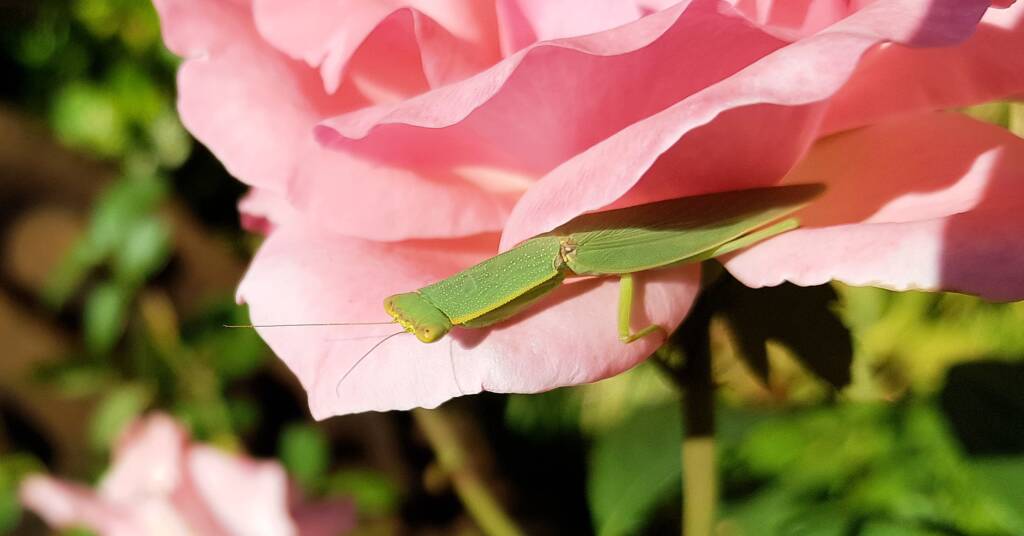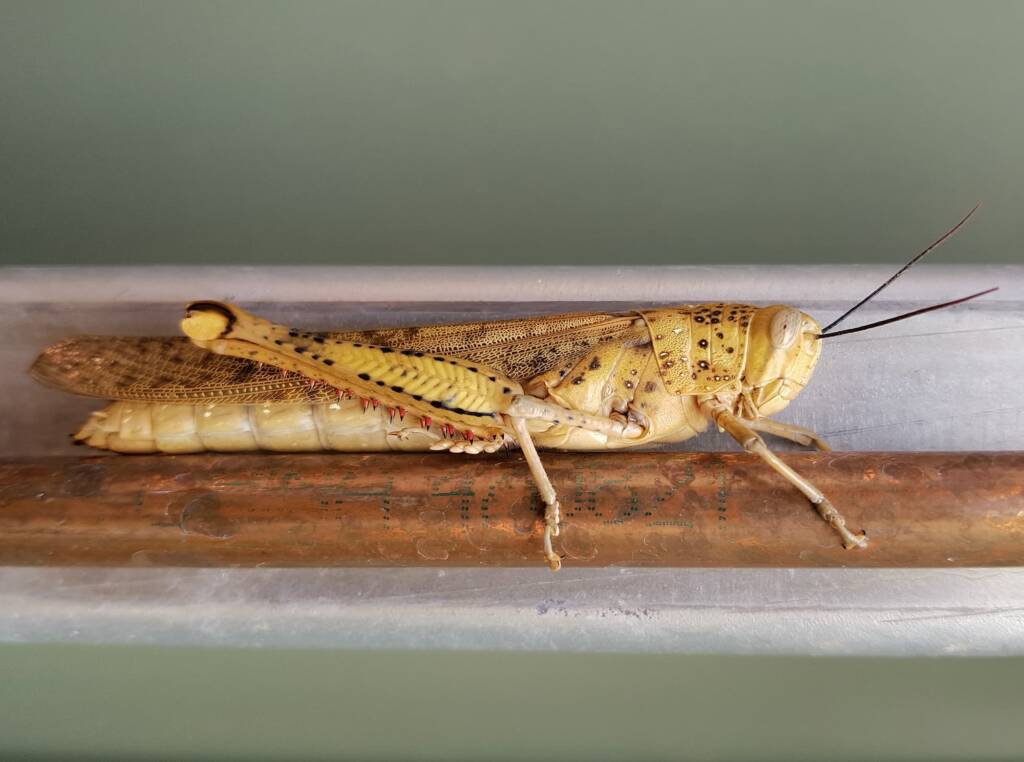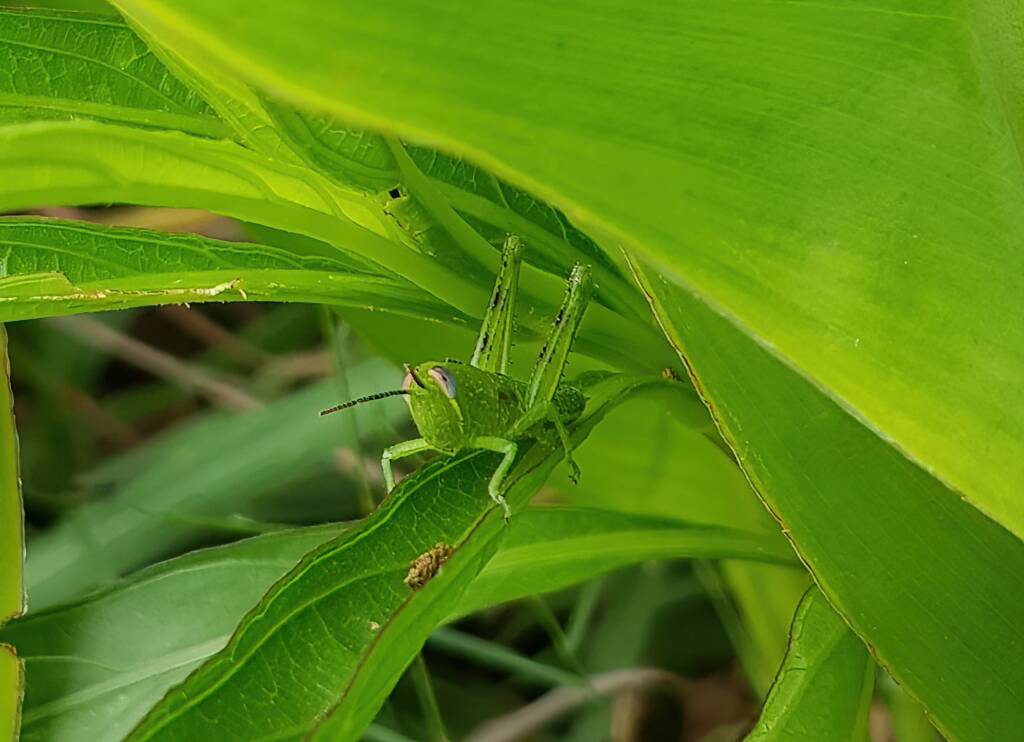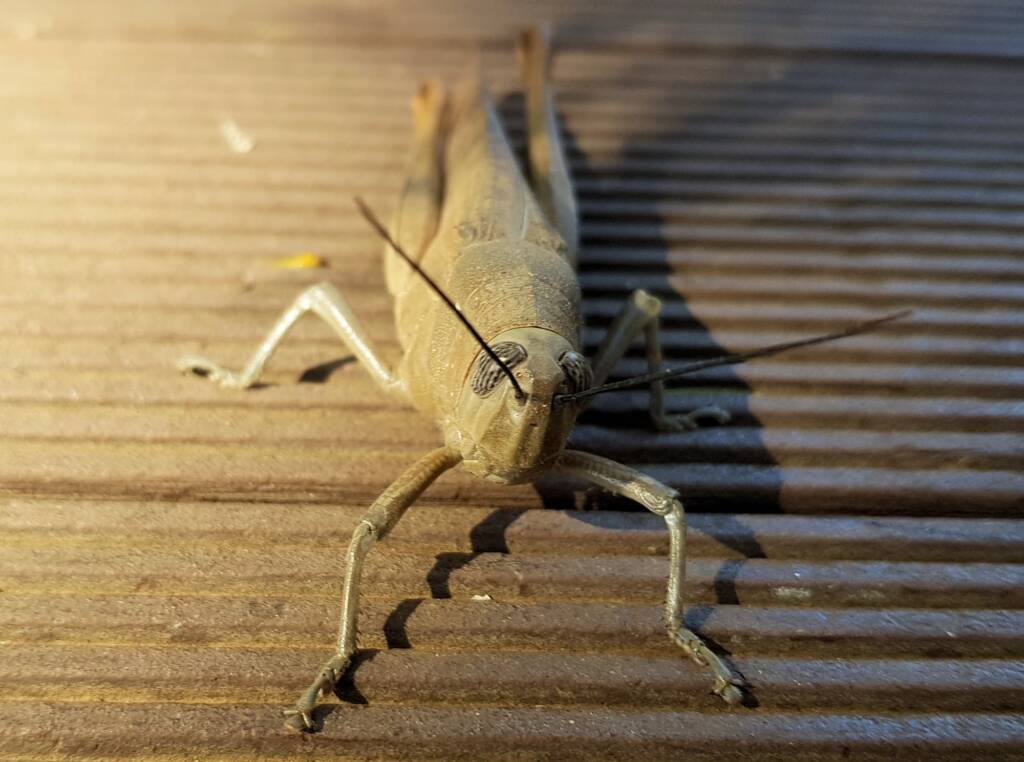Australian Orthopteroids
GrasshoppersBlistered Pyrgomorph Giant Grasshopper (Valanga irregularis) Macrotona Queensland Spotted Pyrgomorph (Greyacris profundesulcata)
One of the oldest living groups of insects, with the fossil evidence dating back 250 million years, the Grasshoppers are insects that belong to the suborder Caelifera, order Orthoptera.
Grasshoppers are insects that are also grouped with Crickets, Katydids, Praying Mantids, Stick Insects, earwigs, cockroaches and termites and others, under Orthopteroid Insects (order Orthoptera).

The infraorder Acrididea, including the informal group Acridomorpha is also describe the grasshoppers and ground-hoppers. It contains a large majority of species in the suborder Caelifera. The study of grasshopper species is called acridology.

To learn more about the orthopteroid, there is a Facebook group Australian Orthopteroids and iNaturalist project Australian Orthopteroids.1
The orthopteroid orders – Orthoptera (grasshoppers, crickets, and allies), Blattodea (cockroaches and termites), Mantodea (mantises), Phasmatodea (stick and leaf insects), Embioptera (webspinners), Dermaptera (earwigs), Plecoptera (stoneflies), Zoraptera (angel insects), and the non-Australian Notoptera (ice crawlers and gladiators) – are not as diverse as other groups of insects, but what they lack in numbers they make up for in size, appearance, and beauty!
Australian Orthopteroids, iNaturalistAU

Most grasshopper species are herbivorous insects, however, a few species are known to be omnivores, feeding on animal tissue and faeces.
Under certain favourable environmental conditions, grasshoppers can appear in large numbers, and may form swarms of locusts.

At all stages of their life cycles, grasshoppers have a lot of natural predators, from the egg stage when they are preyed on by beetles and flies, through their developmental stages as nymphs and as the adult grasshoppers where they are preyed on by ants, spiders and many other mammals. They are also affected by parasites, such as the grasshopper nematode (Mermis nigrescens).
The different grasshopper species do have a number of adaptations to assist them in avoiding predation, including camouflage (blending in with their background), being able to make a quick getaway (by hopping) or hiding in the foliage, whilst others can mimic sticks or twigs. Some colourful species use their colour to advertise that they are inedible and may be poisonous.

There are three stages in a grasshopper’s life cycle, from the egg, nymph stages, and adult. The female grasshopper lays their eggs during autumn to winter, either underneath the soil or on leaf litter. The female then sprays a sticky substance over the eggs forming an egg pod. Each egg pod can contain between 10 to 300 eggs. Approximately ten months later, during spring to summer, the eggs hatch and the juvenile emerge as nymphs.

The nymphs look similar to the adult grasshopper, although they do not have any reproductive organs or wings. The nymph undergo five to six stages of moulting over about six week, before it is an adult grasshopper. During these stages, they consume the local foliage, where they also hide.
The colours of the nymphs are variable. The early instars can be green to brown with variable strong dark patterns, the yellow or orange colour comes later with wing buds that can be pink. As adults they turn brown with grey and dark pattern.

It is during the 25 to 30 days of nymph to adult stage that the grasshopper develop wings. The adult grasshopper develop sexual maturity within 15 days. The lifespan of the grasshopper is approximately 12 months, if they survive predation.

- Scientific classification
- Kingdom: Animalia
- Phylum: Arthropoda
- Class: Insecta
- Order: Orthoptera
- Suborder: Caelifera
- Infraorder: Acrididea
- Informal group: Acridomorpha
- Superfamilies:
- Acridoidea
- Eumastacoidea
- Pneumoroidea
- Proscopioidea
- Pyrgomorphoidea
- Tanaoceroidea
- Trigonopterygoidea
Footnote & References
- Australian Orthopteroids, Facebook, https://www.facebook.com/groups/australian.orthopteroids
- Australian Orthopteroids, iNaturalistAU, https://inaturalist.ala.org.au/projects/australian-orthopteroids
- Grasshoppers, crickets, katydids and locusts: Order Orthoptera, Australian Museum, https://australian.museum/learn/animals/insects/grasshoppers-crickets-katydids-and-locusts-order-orthoptera/
InsectsBees Beetles Blattodea Butterflies Coleoptera Cicada Crabronidae Diptera Dragonflies & Damselflies Formicidae Hemiptera Heteroptera (True Bugs) Mango Planthopper Moths Orthoptera Orthopteroid Processionary Caterpillar Stink Bugs, Shield Bugs and Allies Syrphidae Wasps Water Scorpion (Laccotrephes tristis) Witchetty Grub
